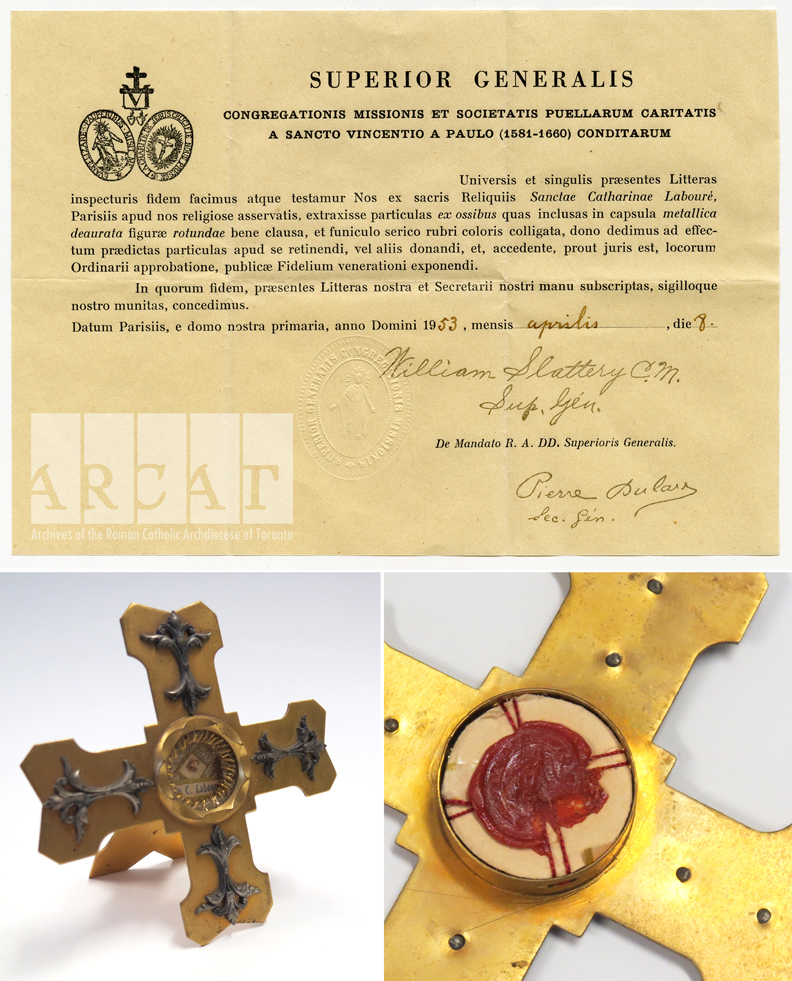The arm of St. Francis Xavier arrived in Toronto today as part of a 15-city Canadian visit. We got a sneak peek at the relic this morning at St. Michael’s Cathedral Basilica.
St. Francis Xavier is one of the great missionary saints of the Church and co-founder of the Jesuit order. This arm - an incorrupt, first-class relic - is venerated as one that blessed and baptized an estimated 100,000 converts. It is rare to see such a large relic outside of a saint's cult site; most first-class relics contained within church altars and reliquaries are tiny fragments of bone or flesh.
Authenticating Relics
Relics have been venerated by the faithful since the earliest days of Christianity and are known for their association with healing and other miracles. Every Catholic church has a relic sealed in its altar as a sign of honour to the saints.This practice evokes a time when Mass was celebrated in secret, over the tombs of martyrs.
St. Francis Xavier is one of the great missionary saints of the Church and co-founder of the Jesuit order. This arm - an incorrupt, first-class relic - is venerated as one that blessed and baptized an estimated 100,000 converts. It is rare to see such a large relic outside of a saint's cult site; most first-class relics contained within church altars and reliquaries are tiny fragments of bone or flesh.
The famous relic of St. Francis Xavier will be in the Archdiocese of Toronto for three days, hosted at St. Michael’s Cathedral Basilica (Jan. 12), St. Francis Xavier Church, Mississauga (Jan. 13) and Our Lady of Lourdes Parish, Toronto (January 14). More information about the visit and a full schedule of events can be found at: www.cco.ca/relic
For a firsthand account one person's encounter with this remarkable relic, read this CBC article by our colleague, Wanita Bates, from the Presentation Congregation Archives in St. John’s, NL.
Authenticating Relics
Relics have been venerated by the faithful since the earliest days of Christianity and are known for their association with healing and other miracles. Every Catholic church has a relic sealed in its altar as a sign of honour to the saints.This practice evokes a time when Mass was celebrated in secret, over the tombs of martyrs.
A diocese may acquire relics directly from the Holy See, from a religious community, or from the cult site where the saint’s body is located. The issuing authority is responsible for securing the relic in a reliquary - often a small metal container known as a theca - with string or wire and a wax seal. The issuer also creates an accompanying relic document that must include the following elements:
- The name and authority of the person issuing the relic (either of a bishop, of a religious superior, or of a postulator)
- The crimped or stamped seal of the issuer and the date of sealing
- The signature of the issuer
- A description of contents: type of particle (which determines the relic's class) and name of saint.
- The shape of the theca (round, oval, cross shaped, etc.)
As an archivist in a modern, corporate archives, there is something very gratifying about having to rely on wax seals and Latin records to serve contemporary needs!
To learn more about the role of relics in the evangelization of the Church, visit Treasures of the Church.
Read our previous post about relics in Archiving Altar Stones.





No comments:
Post a Comment